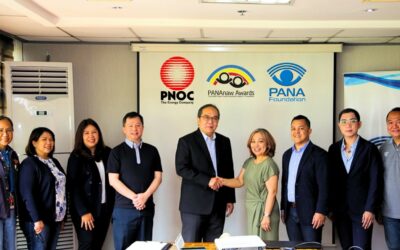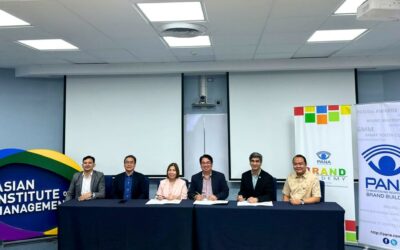
#UBERSTORIES’ “Kilig” (2017), inspired by a series of increasingly-excited real-life tweets from a young man who finds himself unexpectedly sharing an UberPOOL with his crush (who happens to be male), hit 6.7 million views on Facebook. BENCH/’s “How long can you keep a secret?”, featuring a young man who flirts with a cute boy in school but at home, has to pretend his cologne is because of his nonexistent girlfriend, was released earlier this year and already hit 4.7 million views on Facebook and 1.1 million on YouTube. It also spawned almost as many reaction videos at home and overseas, ranging from squealing, hand-flapping excitement with tears of joy.
A common theme to these reaction videos is the joy at seeing fellow LGBT people portrayed not as caricatures or stereotypes, but as ordinary people living normal lives. The young man’s crush in “Kilig” could very well have been a girl and the outcome would have been the same, but the reveal that it was another man gave it an extra thrill. The story of “Secret” isn’t so much about the flirting, but about how parents accept their children for who and what they are, with no recriminations, only love.
This is what Lou-Anne Navalta of Nielsen Philippines calls “the New Normal”—presenting non-traditional, gender identity-centric, queer themes (among others) as a normal part of life. Thanks to the globalization and the internet, Millennial consumers, the largest target demographic for advertisers, live in this New Normal and are more likely to patronize brands that internalize this and portray the issues in an authentic, empathetic, and socially-conscious manner.
How can the Philippine advertising community respectfully address the needs and concerns of a new and rapidly growing target demographic: the LGBT consumer?
During the May 31 PANA General Members Meeting, Ms Navalta and her fellow panelists Amrei Dizon and Brian Tenorio, both from the Philippine LGBT Chamber of Commerce, talked about the gradual introduction of LGBT themes and issues into the mainstream Filipino consciousness as well as the growing social, cultural, and economic power wielded by the LGBT community and their allies.
The New Normal
On the surface, it is easy to see the Philippines’ LGBT-friendly reputation despite its deeply conservative roots. Media, especially entertainment media, is largely driven by LGBT power and influence. Comedian and talk show host Vice Ganda has top billing on four of the five highest-grossing Filipino films, and commands an 11.1-million following on Twitter and 6.3 million on Instagram. In the past few years Filipino LGBT-themed films like 2016’s Die Beautiful have opened to critical acclaim, and TV shows like GMA7’s My Husband’s Lover (2013) pulled in 51.1 million viewers and inspired a whole slew of other LGBT-themed dramas on other networks.
In 2013, the Philippines ranked 73% on the Pew Research Center’s Global Divide on Homosexuality report, higher than any other non-Western country profiled on the list. “However,” Ms Navalta says, “Familiarity isn’t always the same as acceptance.” While advertisers were quick to capitalize on the potential ad revenue generated by My Husband’s Lover, LGBT themes and issues in mainstream media are slow to materialize, and most local brands are still largely unaware of the so-far untapped potential of the Philippine LGBT consumer market.
One reason for this may be stereotypical views of the LGBT community that may still be prevalent today. Amrei Dizon cites early portrayals of LGBT themes and characters in the 1980s, with flamboyantly gay men and tomboys who, miraculously, “when she meets the man of her dreams, magiging girly na sya.” Another reason is that, even years later, there is very little hard research data on the Filipino LGBT community that can accurately gauge its particular needs and concerns, that most of the information that advertisers have had to work on are from studies conducted abroad.
The power of the Pink Economy
International studies have shown that in Western countries, the Pink Economy—the spending power of the LGBT community—has been growing at an exponential rate. In 2016, Bloomberg reported that the LGBT consumer delivered almost $1T to the growth of the US economy, with their purchasing power rising to 3.7% from 2015. Studies also show that as most same-sex households have fewer children, LGBT consumers also have more disposable income. Wine and liquor, travel, electronics, pet care and home furnishings are some of the main outlets where the LGBT community pours that money into.
Savvy, strategic businesses stay competitive by understanding and looking like their customer base, says Ms Dizon. The New Normal demands equality, acceptance, and inclusion, and brands that honestly espouse these not just in their advertising but also in their business policies and practices earn the loyalty of LGBT consumers and their allies. “If you need a socially responsible cause? Show to your community and to the LGBT youth that you care by reflecting them back, with a positive image in media.”
Brands can do that with advertising that have an inspirational message, stories that reflect authentic, positive realities.
“Better representation of LGBT people in branding and marketing can act as a catalyst to improve lives of LGBT people and move towards a society where all people everywhere are accepted without exception,” says Ms Dizon.
Ultimately, marketing should be LGBT-inclusive “because it’s the right thing to do.”
Dealing with “ba(c)klash”
Despite reaching a consensus that efforts to market to the LGBT community is a good thing, especially in an ostensibly LGBT-friendly country like the Philippines, Brian Tenorio brings up an excellent question: “Why don’t we have all these efforts in place yet?”
There is an understandable fear that openly adopting diversity- and LGBT-friendly stances would result in an economic backlash against brands. During an informal Q&A session, younger members of PANA cited the influence of religion and a still-conservative society as a major factor holding brands back from giving full-throated support. The SOGIE Equality Bill, which went through several filings over 17 years but finally managed to pass a unanimous vote in the House of Representatives this year, is currently stalled in the Senate by ultraconservatives.
There may be hope, though. The entry of the post-Millennial generation into the workforce—a generation that is not that fussed about gender identity and, like their Millennial elders, are highly educated and more socially aware—may change the Filipino landscape.
The panel ended on a hopeful, action-oriented note—a call towards forming discussion groups with brands, together with the help of the Philippine LGBT Chamber of Commerce, and expanding the discussions to include other sectors such as schools, activist groups, the theater and literary communities, among others. Even if only informally, starting out in offices and even coffee shops—”We’ll do it for free,” says Mr Tenorio. “We’ll even buy our own coffee!”
By Mary Ann Marchadesch



